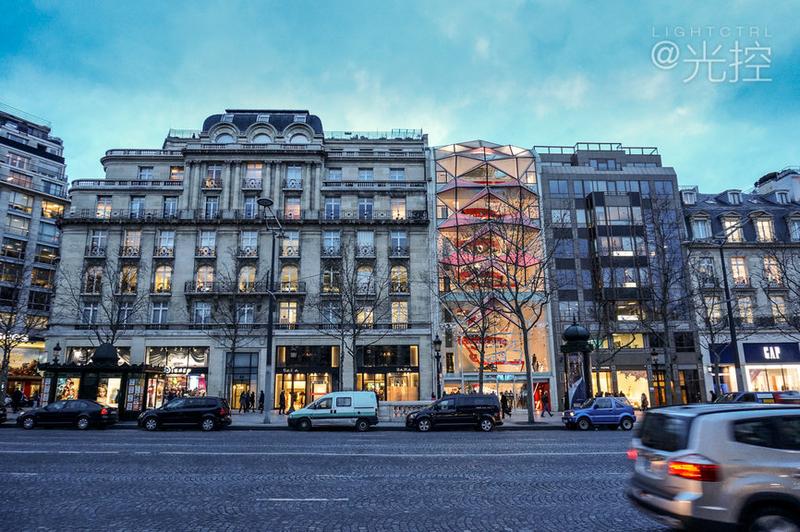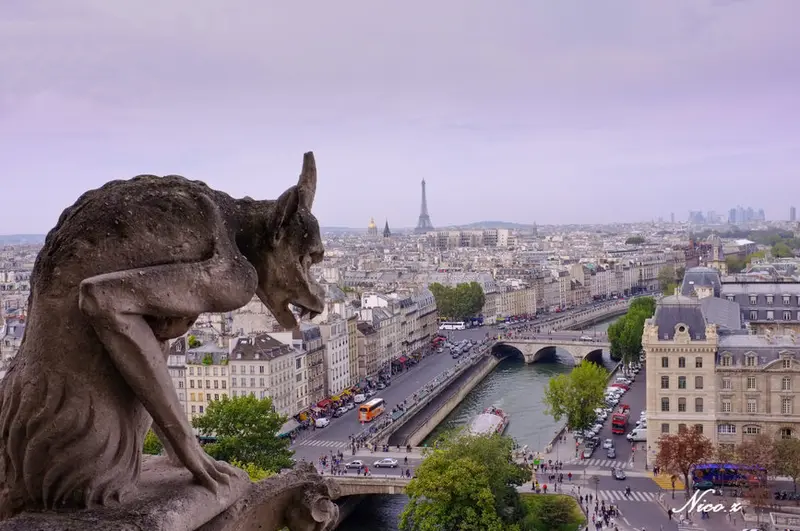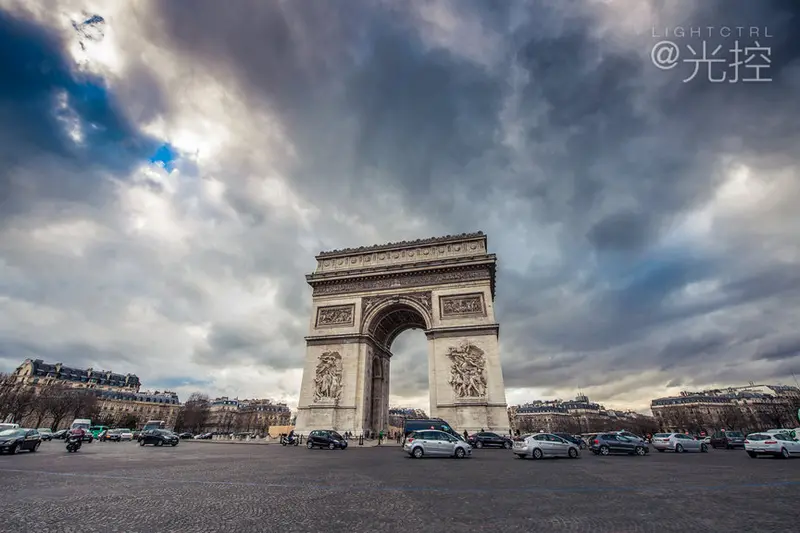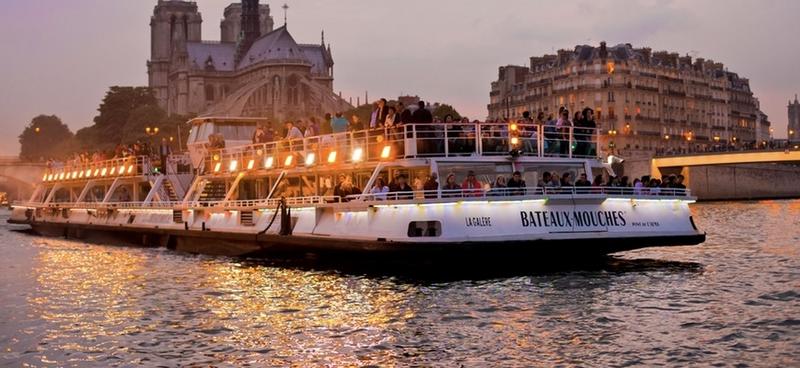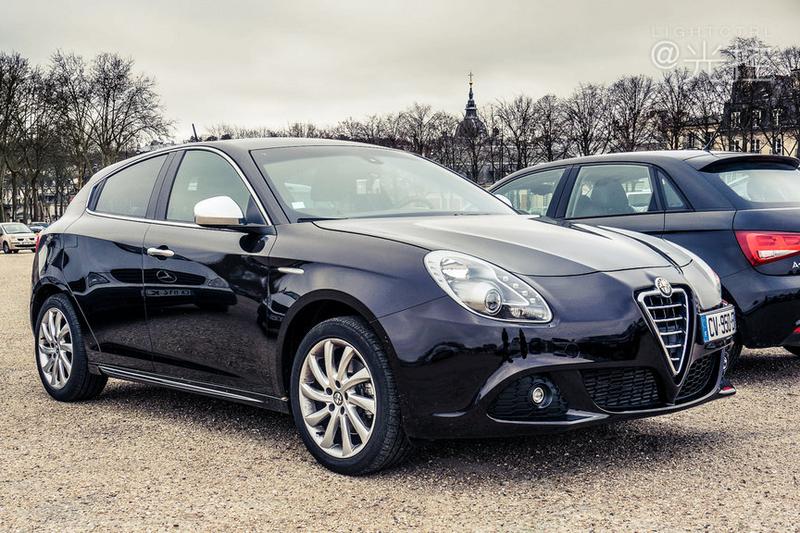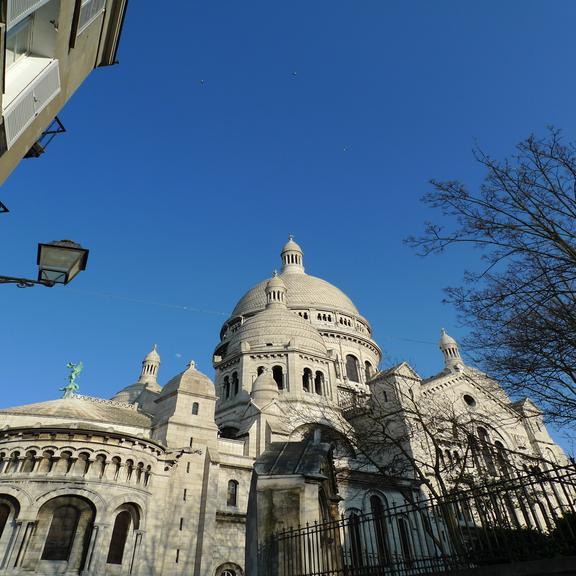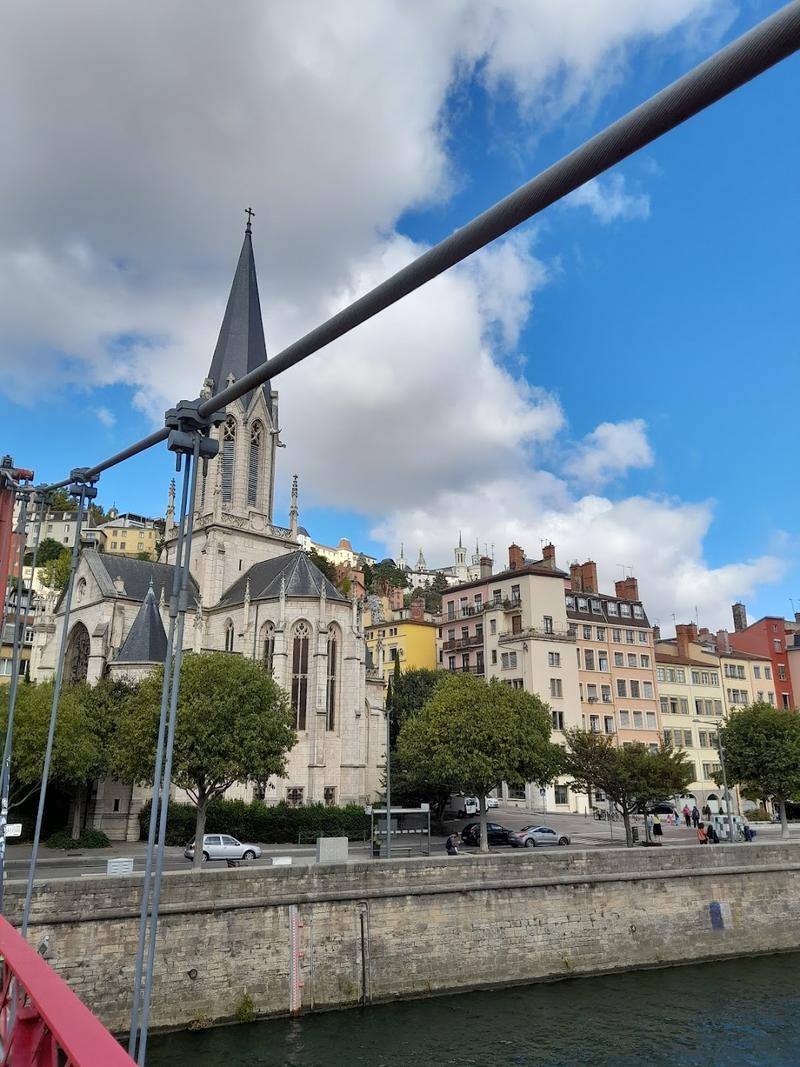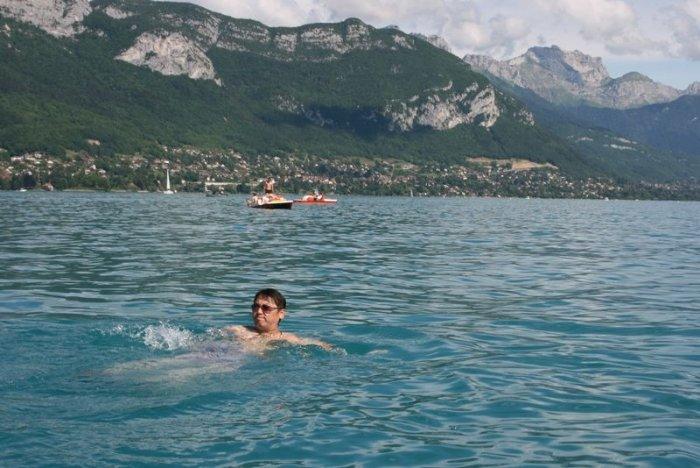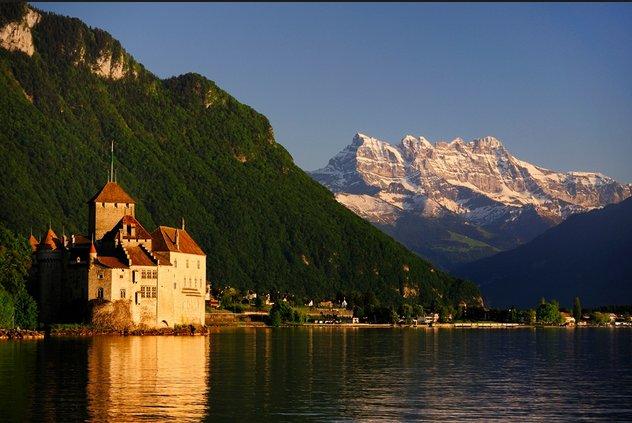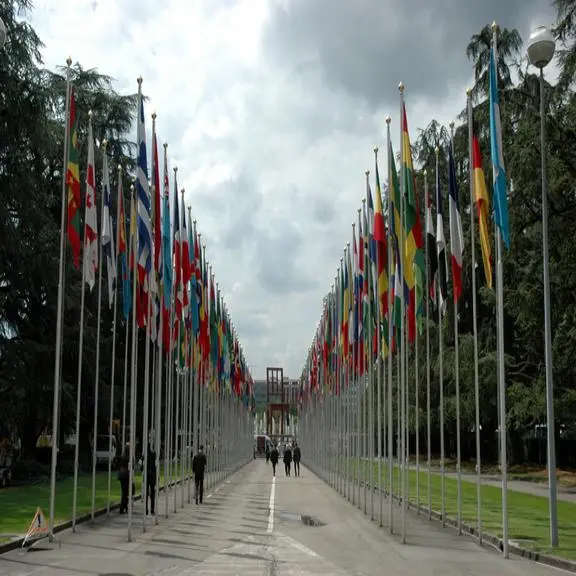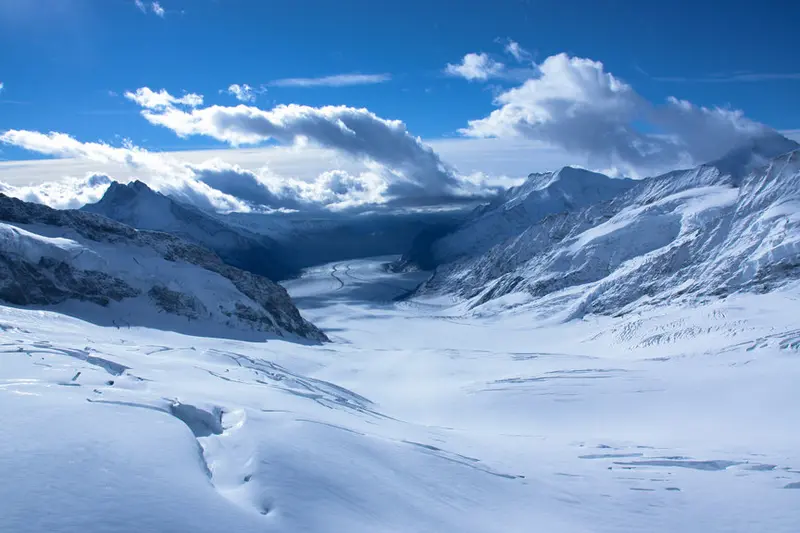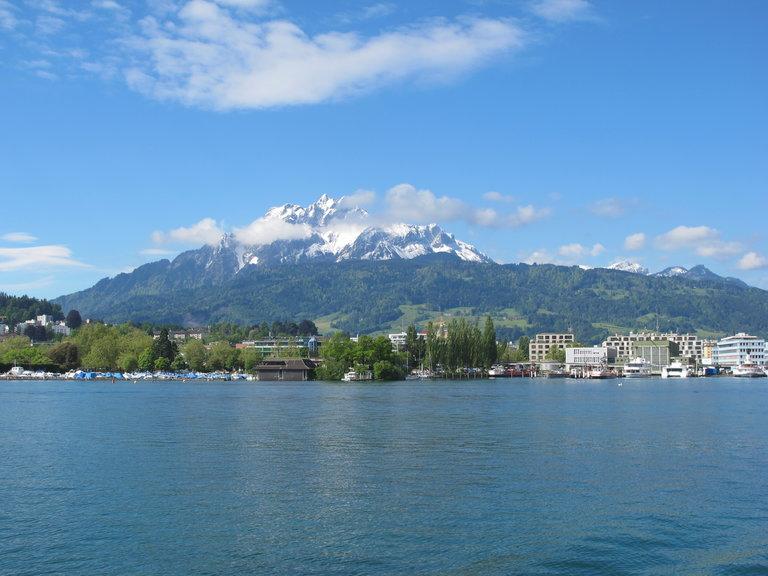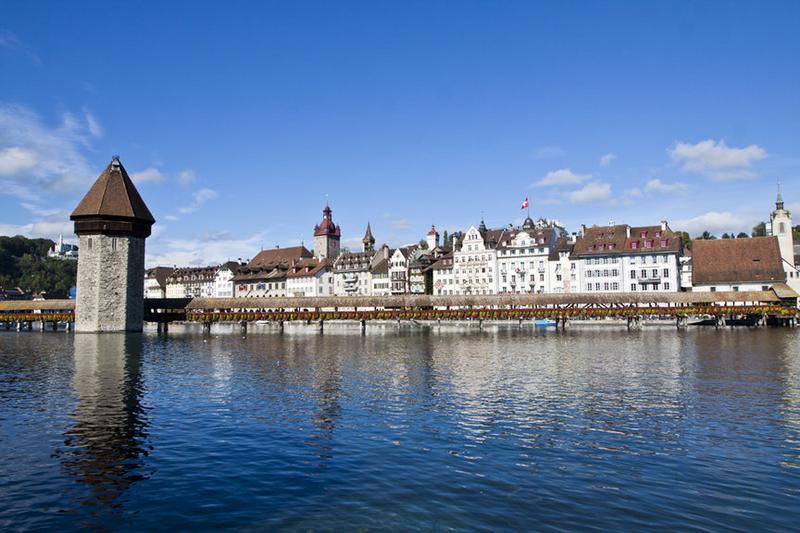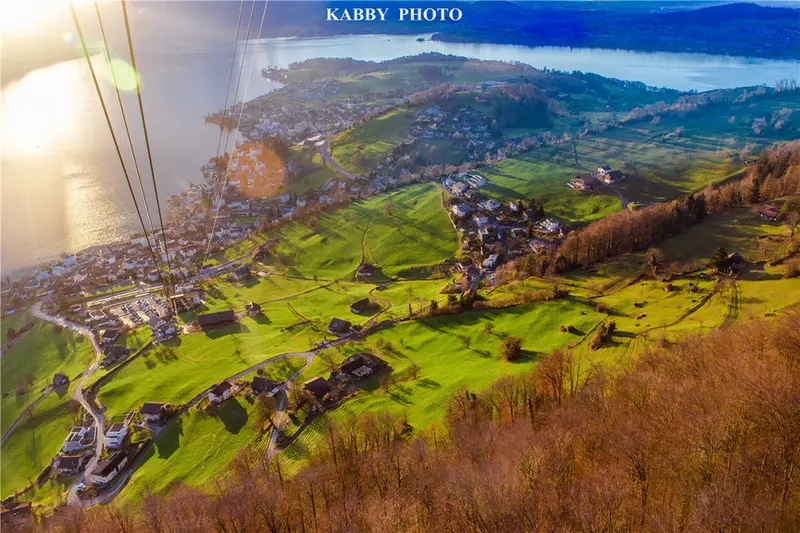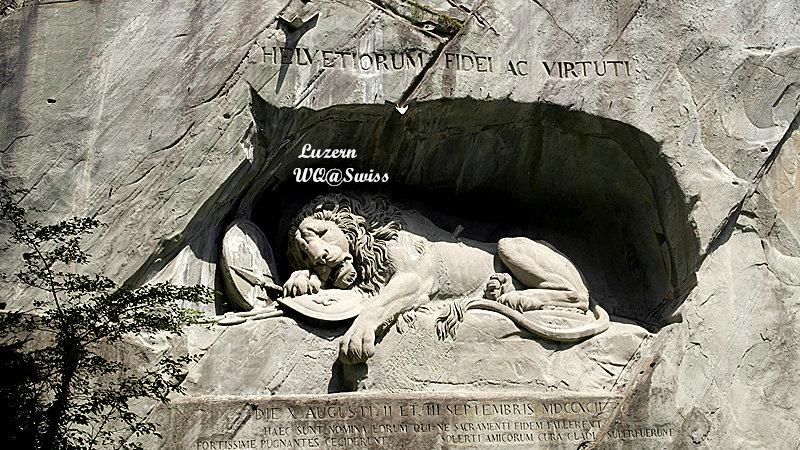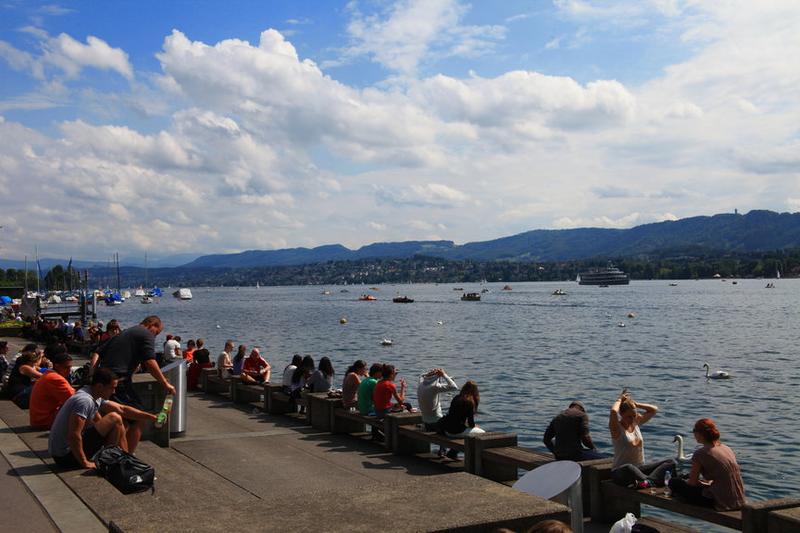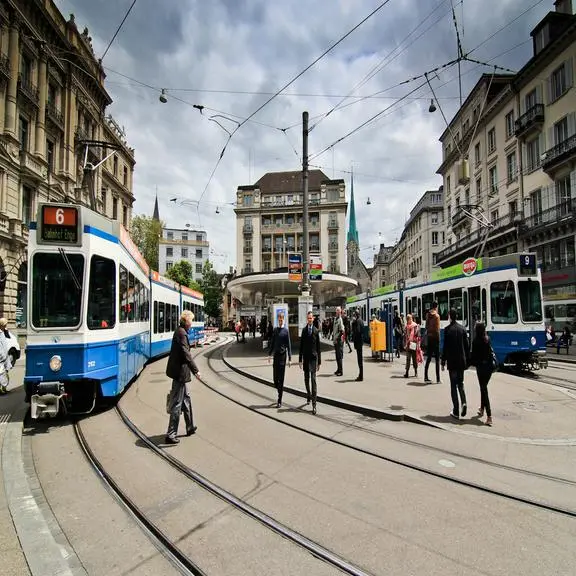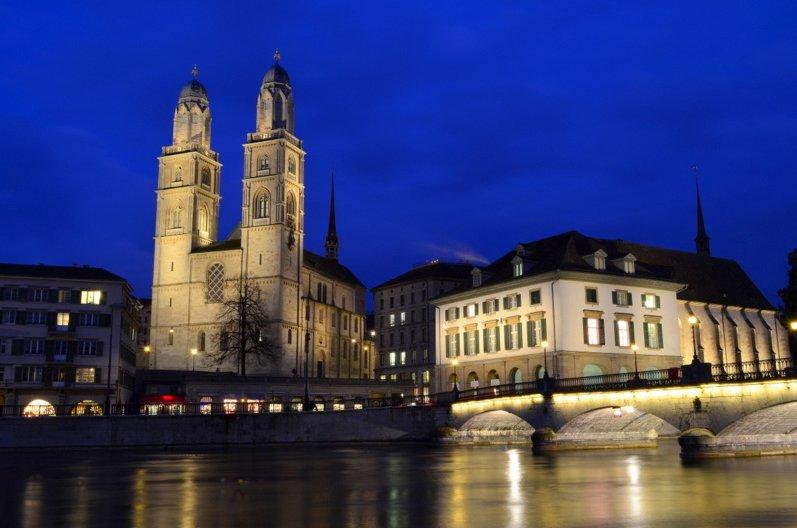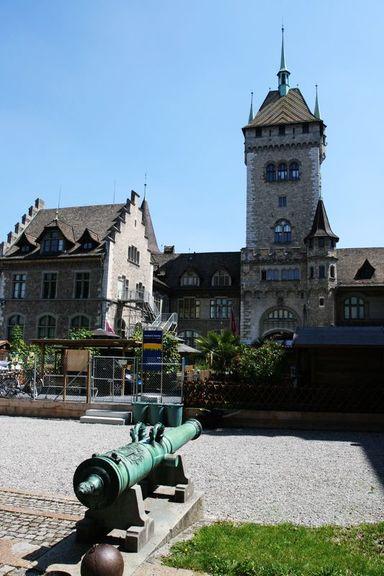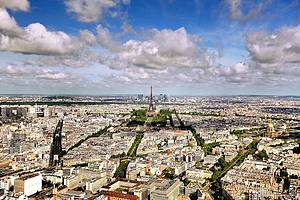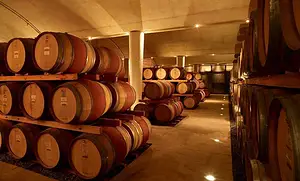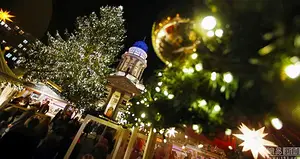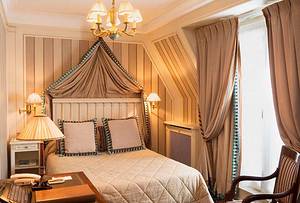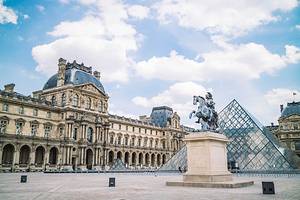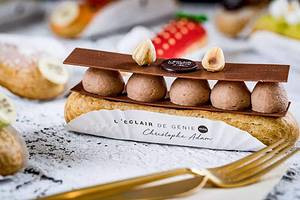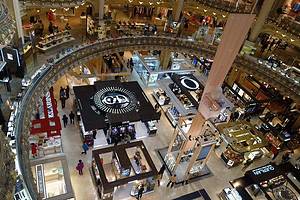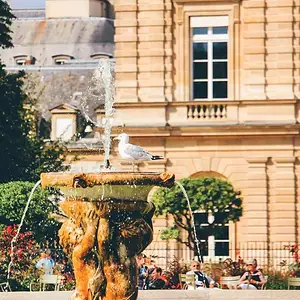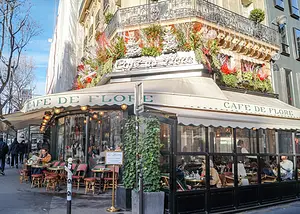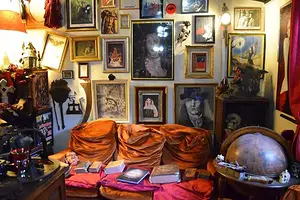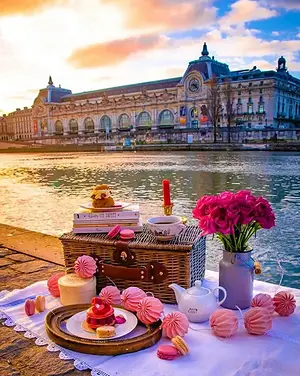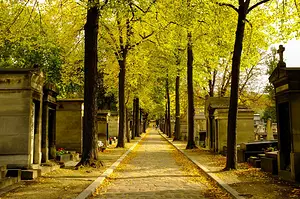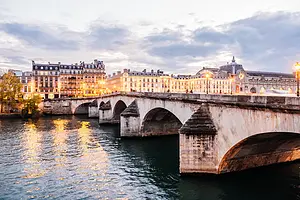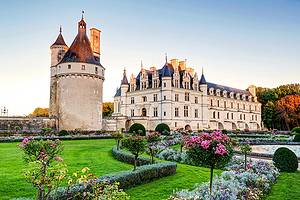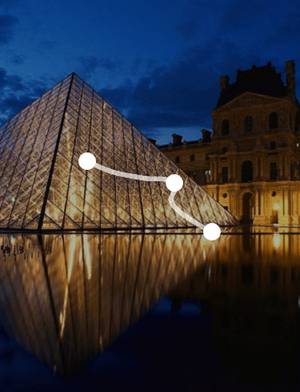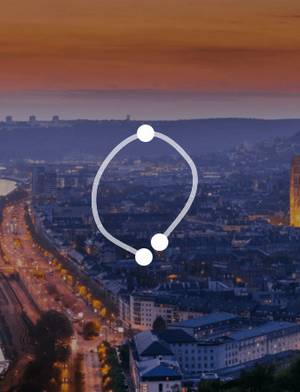France-Switzerland In-Depth 12 Days
9 cities |
25 attraction(s) |
total distance 903
km
 TIPS
TIPS
Day1
Day2
Day3
Day4
Day5
Day6
Day7
Day8
Day9
Day10
Day11
Day12
Day1: Paris
3 attraction(s) ·
6 km
1
In 1889, the Eiffel Tower was built to commemorate the 100th anniversary of the French Revolution and to welcome the World Expo. This 324-meter-tall giant steel structure was initially controversial as it clashed with the architecture of Paris, and some even called for its demolition. However, today the Eiffel Tower has become a symbol of France and Paris.
Visitors can take the elevator or climb the stairs to reach the top of the tower and enjoy the breathtaking view of the city. On New Year's Eve, the tower sparkles for ten minutes at the top of each hour, and on specific holidays, it displays different colors, such as red for the Chinese New Year and blue for EU Day. During National Day, the Champ de Mars below the tower is an ideal venue for music festivals and New Year celebrations.
There are also two restaurants on the tower: Tour Eiffel 58 and the Michelin-starred restaurant Jules Verne. Tour Eiffel 58 offers lunch and dinner, starting at €19 for lunch and €80 for dinner, but with a higher cover charge. Jules Verne used to be a three-star Michelin restaurant but now has only one star. Lunch starts at €90, and dinner costs around €300 per person. Despite the expensive prices, they are still highly sought after due to their unique location. Therefore, it is advisable to book at least two months in advance during the peak season. If your budget allows, it is recommended to try other three-star Michelin restaurants for a better gastronomic experience.
4
km
2
The Louvre Museum is the former residence of French kings, built in the late 12th century. After several expansions and renovations during different periods of reign, it has become one of the largest museums in the world. The Louvre is divided into eight sections, including Oriental Antiquities, Egypt, Greece, Etruria and Ancient Rome, Paintings, Sculptures, Art Objects, Islamic Art, and Medieval to 1848 Paintings.
Originally a medieval fortress defending Paris, the Louvre has played various roles throughout history. With a love for art, French kings sponsored artists and collected a large number of renowned Italian paintings. During the French Revolution, it was opened as a museum and continued to expand and collect more artistic treasures in subsequent historical periods. The Louvre houses around 400,000 artifacts, with approximately 40,000 on regular display. Visitors should prepare in advance and, based on personal interests, it is recommended to visit the Italian and French painting galleries, Ancient Egypt Civilization gallery, Ancient Greek and Roman art gallery, and Napoleon III's apartments. As one of the world's top three museums, the Louvre attracts numerous visitors and has become one of the most popular tourist destinations in the world.
3
km
3
The famous Champs-Élysées is located in the 8th arrondissement of Paris and is known as the most beautiful street in the city. Its name is inspired by the Elysium in Greek mythology, the dwelling place of saints and heroes, symbolizing romance and freedom.
The Champs-Élysées is the central axis of Paris, with the Arc de Triomphe at its western end and the Concorde Square at its eastern end. It is also connected to the Louvre through the Arc de Triomphe du Carrousel. The street is decorated with special lights during major holidays, and important events like the Bastille Day parade and the final stage of the Tour de France are held here.
Nowadays, the Champs-Élysées is often crowded, but there are only a few luxury brands such as Cartier and Mont Blanc on the avenue. The true luxury shopping district is formed by the adjacent Avenue Montaigne, Avenue George V, and Rue François I, known as the Golden Triangle, attracting numerous shoppers. However, during Christmas and New Year, the street becomes particularly lively with the dreamy lights on the trees and the Christmas market, creating a joyful atmosphere for visitors. The street is also vibrant in July, with tropical carnival before the Bastille Day and the final stage of the Tour de France after the national holiday. Sometimes, the French even turn the entire Champs-Élysées into vegetable gardens to educate the public about the sources of food on their tables.
Day2: Paris
3 attraction(s) ·
7 km
1
Notre-Dame Cathedral is located on the Île de la Cité in the center of Paris, France. It is a Gothic-style church and the cathedral of the Catholic Archdiocese of Paris. Built between 1163 and 1250, the cathedral has a history of 850 years, witnessing the changes in Paris's history, as well as Napoleon's coronation and the wedding of Napoleon III. The famous novel "The Hunchback of Notre-Dame" by Victor Hugo has also made the cathedral a popular tourist destination. Many people climb to the bell tower to search for the Hunchback, but long queues are common during peak season. In addition, on the first Friday of each month at 3 pm, you can see the exhibition of three relics. Visiting Notre-Dame Cathedral is free, but please respect local religious customs and dress codes, and maintain silence. If you want to visit the bell tower, you can buy tickets on the left side of the church, but be prepared for wait times of over two hours during peak season.
5
km
2
The Arc de Triomphe is located in the center of Place Charles de Gaulle in Paris and is also known as the "Triumphal Arch." The construction of the monument began in 1806 to celebrate a great victory in the Battle of Austerlitz, with Napoleon laying the first stone. Unfortunately, Napoleon did not live to see its completion. Twenty years later, a funeral was held under the Arc de Triomphe to honor him.
Walking from the underground tunnel of the Champs-Élysées to beneath the Arc de Triomphe, visitors can see an unknown soldier's tomb and an eternal flame, which is lit to honor the 1.5 million French soldiers who sacrificed their lives in World War I. On important holidays, a giant French flag is hung at the top of the Arc de Triomphe, accompanied by related commemorative activities. For example, May 8th commemorates Victory in Europe Day from World War II, and November 11th commemorates Armistice Day from World War I.
On July 14th, the national holiday military parade takes place from the Arc de Triomphe to Place de la Concorde. To secure a good spot, visitors need to wake up early and queue in advance. On certain clear mornings, visitors may find some people already waiting quietly beneath the Arc de Triomphe. Additionally, the monument becomes the center of New Year's Eve celebrations, attracting a large crowd, although there are no fireworks in Paris.
The Arc de Triomphe serves as the hub, with twelve major avenues radiating from it. Among them, the most famous one is the Avenue des Champs-Élysées, leading straight from the Louvre to Place de la Concorde. This nearly two-kilometer-long avenue is considered one of the most beautiful streets in the world.
2
km
Day3: Paris
2 attraction(s) ·
19 km
1
This article introduces the history and highlights of the Palace of Versailles in France. The palace was built by King Louis XIV, also known as the Sun King, using 30,000 workers in order to rival the Château de Vaux-le-Vicomte, the castle of his jealous finance minister, Fouquet. After the French Revolution, the Palace of Versailles became a French history museum and witnessed many historical events, such as the signing of the Treaty of Paris by England and America, the signing of the Treaty of Versailles by France, England, America, and Germany, and the declaration of the end of World War I. The Hall of Mirrors and the Gallery of Battles are the most famous highlights of the Palace of Versailles, along with many exquisite rooms and gardens. Emperor Kangxi of China and King Louis XIV were contemporaneous monarchs who promoted cultural exchanges between France and China in the 17th century, so there are portraits of Emperor Kangxi and Chinese porcelain in the Palace of Versailles. King Louis XIV personally appointed Zhang Cheng, Bai Jin, and others to China to survey and map the country, and Emperor Kangxi also learned about Western natural science knowledge. Bai Jin was sent back to France by Emperor Kangxi to recruit scientists and brought with him a large number of Chinese porcelain and other gifts given by Louis XIV. Emperor Kangxi, together with Chinese scholars, drew a national map based on provincial divisions, leaving a mark of Chinese history in the Palace of Versailles.
19
km
2
Montmartre is a small village located on a hill about 130 meters high outside the northern city of Paris. It is the geographical high point of Paris and was once a gathering place for impoverished artists. It quickly became the center of drinking and entertainment in Paris due to its location outside the city and its production of wine, giving rise to landmarks such as the Moulin Rouge and the Black Cat. Montmartre attracted many impoverished artists such as Van Gogh, Picasso, Matisse, and Renoir. Today, Montmartre has developed into an upscale residential area with numerous hotels and restaurants. It is also a popular tourist destination due to its portrayal in films like "Amélie". There are various tourist attractions, such as the Basilica of the Sacred Heart and the Place du Tertre. The steps in front of the Basilica offer the best vantage point to admire the entire city of Paris, and there are also cafes and restaurants here. The Place du Tertre is crowded with painters, and you can have your portrait painted by your favorite artist. Couples can also seek out the "I Love You" wall that features the phrase in various languages. Other notable attractions include the Pancake Windmill, the Place du Pigalle, the Cunning Rabbit Bar, the Montmartre Museum, the Montmartre Cemetery, and the Passe-Muraille. In addition, Montmartre exudes a strong artistic atmosphere, with street performers and painters visible everywhere. You can experience the nightlife by visiting the Moulin Rouge and other bars. Whether during the day or at night, Montmartre is worth a visit and is a charming scenic area.
Day4: Lyon
2 attraction(s) ·
1 km
2
19th-century basilica with 4 octagonal towers, a religious art museum & regular Catholic services.
Day5: Annecy
1 attraction(s) ·
0 km
1
Lake Annecy is a destination perfect for water sports and leisure activities, surrounded by beautiful natural scenery that should not be missed. Playing and enjoying the water on the lake, bathing in the sunlight, is definitely an unforgettable experience. At the same time, don't forget to appreciate the beautiful views of the mountains and the lake, and feel the grandeur and mystery of nature. When visiting Lake Annecy, we should cherish this moment and make it an unforgettable memory in our lives.
Day6: Geneva
2 attraction(s) ·
3 km
1
The surroundings of Lake Geneva are beautiful, perfect for strolling along the lake shore or experiencing the pleasure of boating.
3
km
2
The Palace of Nations, built in 1929, was chosen as the headquarters for the League of Nations in 1938 and later became the European headquarters for the United Nations in the 1950s. It is located in Ariana Park in the city of Geneva, which was donated to the city by the Revilliod de Rive family with the condition that some peacocks be allowed to roam free in the park, which now adds to the scenery of the area. To visit the Palace of Nations, one must join a guided tour and bring a passport or other form of identification, and book the tour in advance. The tour lasts for one hour and guided tours are available in English and French.
Day7: Interlaken
2 attraction(s) ·
19 km
1
The Jungfrau, located in the Bernese Highlands, is one of the most famous mountains in Switzerland and one of the most charming landscapes in the area. It has a friendly relationship with the Yellow Mountains in Anhui, China and is greatly favored by Chinese tourists. The Jungfraujoch Railway was opened nearly 100 years ago, taking visitors to Europe's highest railway station, the Jungfraujoch station at an altitude of 3454 meters, where there are restaurants and other services. Here, you can visit the super ice palace and explore the world inside the glacier, while enjoying the spectacular panorama of the Alps from the Sphinx and Platt viewing platforms. Additionally, you can also play to your heart's content in the glacial snowfields.
In 2001, this area was listed as a world natural heritage site by UNESCO, attracting even more attention. At an altitude of 3571 meters on the Sphinx viewing platform, you can take Switzerland's fastest elevator and enjoy the spectacular panorama of the Alps, including the Aletsch Glacier, 24 kilometers in length and the longest glacier in the Alps, in view of the landscapes of the Bern, Valais, and Rütli mountains. On clear days, you can also see the Black Forest in Germany.
19
km
Day8: Spiez > Thun
2 attraction(s) ·
9 km
Day9: Kriens-Luzern
2 attraction(s) ·
1 km
1
This scenic park is naturally pristine and particularly worth a visit. Its lake is crystal clear and can reflect the spectacular views of the Pilatus mountains and the cityscape of Lucerne. It is truly breathtaking.
1
km
2
The Kapellbrücke is a 204-meter (670-foot) wooden covered bridge that spans the Reuss River at the outlet of Lake Lucerne in Switzerland. It is a famous tourist attraction and landmark of Lucerne. The bridge was built in 1333 for defense purposes and is brown in color with a red roof. It houses approximately 120 paintings from the 17th century depicting the history of Lucerne. However, most of the bridge was destroyed in a ship collision in 1993, but was quickly rebuilt to its original form. The current bridge is a reconstruction built after 1993. In the middle of the bridge is an octagonal water tower that is 140 feet tall and was historically used as a prison, torture chamber, lookout and treasury. On the north bank of the Kapellbrücke is the St. Peter's Church, which is why it is commonly called the "Church Bridge".
Day10: Kriens-Luzern
2 attraction(s) ·
13 km
1
The Rigi Mountain, located at the forefront of the Alps, is known as the "Queen of Mountains" and is one of the most famous observation decks in central Switzerland. The historic Rigi Mountain is also a great place to watch the sunrise and sunset, with stunning views of the Alps and the beauty that extends to the Black Forest in Germany and the plains of France.
As early as the early 19th century, cultural celebrities such as Weber, Mendelssohn, and Victor Hugo had visited the mountain. In 1864, Queen Victoria of England also visited Rigi, which was a crossroads of history and culture. In 1871, the first mountain climbing railway in Europe was built here, and its steam locomotive can still be seen today.
Today, tourists can take the mountain climbing train or cable car from the three locations of Vitznau, Goldau, and Weggis to enjoy the beautiful scenery. It only takes an hour to reach the mountain climbing train station in Vitznau from the Lucerne pier.
The Rigi Mountain has a gentle and beautiful terrain, with more than 100 kilometers of hiking trails and many hotels, restaurants, and holiday apartments. Every year, a large number of tourists and business clients come here to enjoy the beautiful scenery and experience the rich Swiss culture, or to hold meetings and training activities.
13
km
2
This dying lion statue, measuring 10 meters long and over 3 meters tall, was carved by a Danish sculptor in 1821 on natural rock. The statue depicts a suffering lion lying on the ground with a broken spear through its shoulder, next to a shield adorned with the Swiss coat of arms. The purpose of the statue was to commemorate the 786 Swiss mercenaries who sacrificed themselves on August 10, 1792, to protect the safety of the Louis XVI family inside the Tuileries Palace in Paris. There is also a description of the event inscribed below the statue.
At the time, Switzerland was a poor and backward country, and many men became mercenaries in various European countries to make a living. Swiss mercenaries were loyal to their employers and were brave warriors. However, the brutality of the mercenary system is often masked by honor and money. After this event, Switzerland stopped exporting mercenaries, leaving only the famous Swiss Guard to serve the Vatican.
Due to its depiction of loyalty and bravery, the Swiss Guard of the Vatican has been in service to this day. Mark Twain later came to Lucerne and praised this "the most tragic and touching statue in the world," which has been engraved in people's hearts ever since.
Day11: Zurich
2 attraction(s) ·
2 km
1
The glacial Lake of Switzerland is located in the northeast of the plateau and extends southeastward from the city of Zurich. The lake is at an altitude of 406 meters and has a crescent shape, stretching 29 kilometers from southeast to northwest, with a maximum width of about 4 kilometers and a minimum width of only 1 kilometer. The lake covers an area of 88 square kilometers, with the northwest being deeper, reaching a maximum depth of 143 meters, while the southeast is relatively shallow.
The surrounding terrain of the lake is gentle and is often covered with vineyards and orchards. When looking south, the beautiful Alps can be seen. The lake is home to a large number of water birds, and signs have been set up along the shore for people to observe them. The most famous and easily identifiable species of water bird is the swan, with its snow-white body and plump appearance unmatched by other water birds.
Pigeons and seagulls can often be seen gathered together by the lake, sometimes soaring in the air, sometimes playing with swans on the water's surface and sometimes flapping their wings to forage at the lakeside. Tourists by the lake always attract a large number of seabirds, which compete to divide the food. The unique scene of people and birds living in harmony by the lake forms a unique landscape.
2
km
2
Bahnhofstrasse, also known as the Station Street, is one of the longest shopping streets in Europe. Besides being one of the most expensive shopping places in the world, the street is also the real golden spot of Zurich. It is a stunningly beautiful sight, with luxury brands and private banks from all around the world. Bahnhofstrasse starts at Zurich's main railway station, runs along the Limmat river on the left bank of the commercial center, and eventually reaches the Burkliplatz on the shores of Lake Zurich after a 1.4-kilometer walk. The street is lined with lime trees, and only trams are allowed through to ensure air quality, while cars are not allowed to enter. This historic street was formerly Zurich's old city wall until it was demolished and rebuilt as a shopping street in 1867. With its fashion boutiques and numerous private banks, Bahnhofstrasse is on a commercial level comparable to New York's Fifth Avenue.
Day12: Zurich
2 attraction(s) ·
2 km
1
This monastery church, built about 1100 years ago, is known for its twin tower Romanesque architecture and has become one of the iconic buildings of Zurich. The church faces the Grossmünster and played a key role in the Swiss Reformation of the 16th century, with the theological faculty of the University of Zurich and the Museum of Reformation located here. In addition, the church is decorated with exquisite stained glass by the modern art master Giacometti.
2
km
2
Located across the train station in Switzerland, the Swiss National Museum (Schweizerisches Landesmuseum) was founded in 1989 as a well-known comprehensive museum in Switzerland. The museum primarily collects artifacts related to Swiss history and culture from the Neolithic era to the present. As the largest museum in Switzerland, it covers various eras such as stone tools, handicrafts, art, and humanities including paintings, providing a real display of thousands of years of European history.


